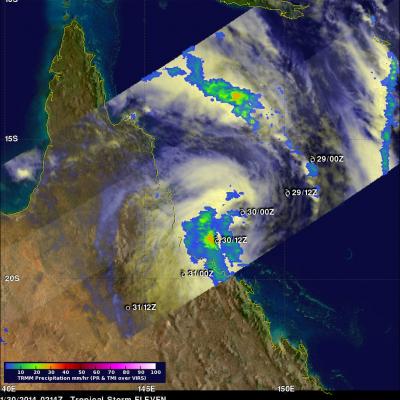GPM Completes Final Checks, Prepares for Fueling
The GPM Core Observatory completed final checks and the team is preparing to install it in the transportation canister that will move it to the spacecraft and fairing assembly building at JAXA’s Tanegashima Space Center, Japan. There, the spacecraft will be fueled next week, followed by installation into the fairing that will contain the spacecraft on the top of the H-IIA rocket. Last week, GPM passed its Operational Readiness Reviewat NASA's Goddard Space Flight Center in Greenbelt, Md. A NASA panel reviewed all systems and procedures in place for GPM's ground, operation and control systems




